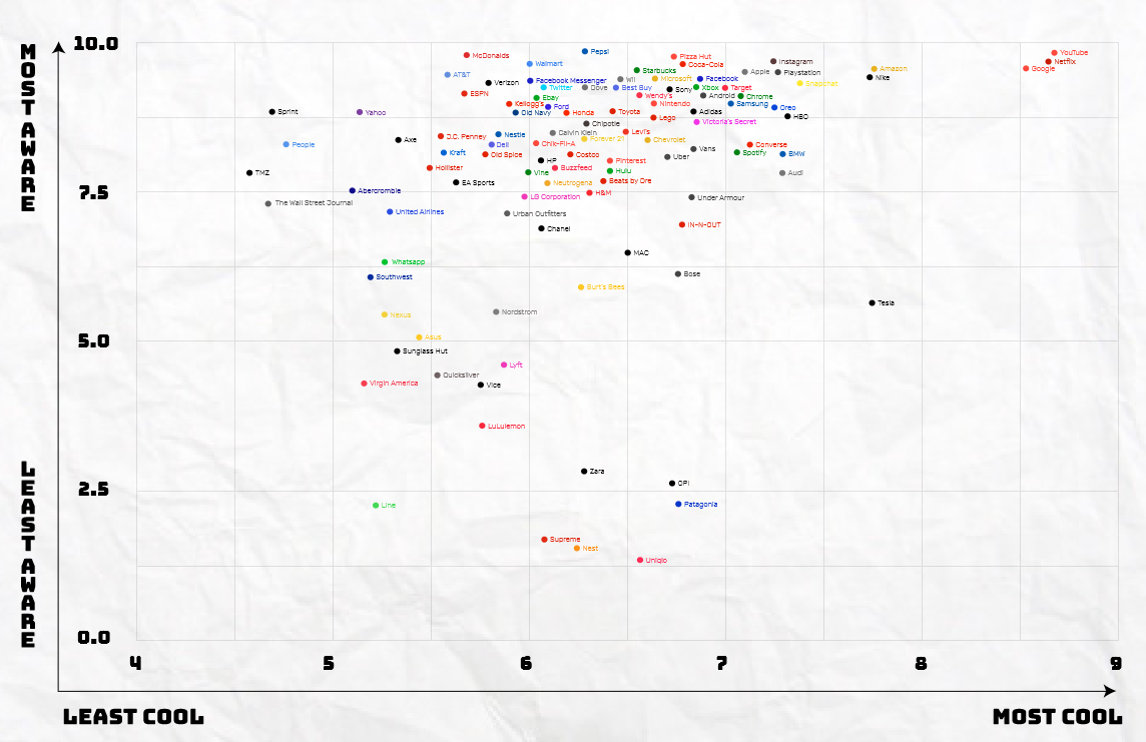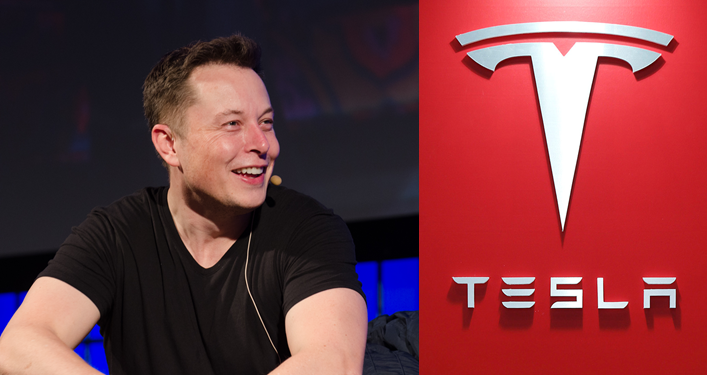
As we continue to conduct research among Millennials – both qualitative and quantitative – we keep seeing many of the same patterns. One of the biggest running themes is how young consumers think differently about brands than their parents and grandparents.
For older generations, it may have been about aspiration or just a clever marketing message. Of course, price point always factored into brand decisions and perceptions, too.
But for younger consumers, the story behind the brand can be just as meaningful as its attributes or cost. In fact, it’s the story that often plays a big part of what can make a brand cool. And it’s reminiscent of a theme we’ve mined here in this blog over the years, articulated the best by Simon Sinek. His premise:
“People don’t buy what you do – they buy why you do it.”
This premise goes to the heart of Apple’s rise to glory in the 2000s – even beyond the passing of Steve Jobs (although he was most certainly a big part of his brand’s story).
A recent story in Forbes by Deep Patel – “How Millennials Are Changing These 3 Industries” – underscores the values young people place in the products and services they support:
- Transparency
- Personalization
- Choice
Patel singles out Ellis Dinh, the founder of “The Girlfriend Collection,” a clothing brand geared for young consumers. Her products aren’t just about what looks good or what they cost. They also reflect many of the passions that Millennials value – wellness, sustainability, and a sense of social consciousness. The point is that brands that incorporate these values that many young people hold near and dear have a greater likelihood of garnering their attention and generating sales – and even loyalty.
I recently conducted focus groups among twentysomethings and the discussion veered into trusted brands. Interestingly, Starbucks – not a new, quaint, or quirky brand – has managed to maintain a sense of relevance thanks to its social compass and its ongoing conversations about themes like sustainability and even race.
Even though Starbucks has become a ubiquitous, multi-national brand, their stores typically exude a sense of community and even connectedness – not bad for a global corporation with north of 24,000 stores.
A recent study – “It’s Lit” from Google” – mostly focuses on Generation Z. But it also features an 18-24 year-old component, touching on the youngest Millennials. One of the driving goals of this research project was to track both brand awareness and the “cool factor.” What are the common themes among brands that are cool among emerging consumers just gaining some spending power?
A look at the upper-right quadrant of the chart below pinpoints brands that have managed to achieve both of these qualities:

There are a lot of brands on this chart (122, to be exact) and the font is small, but that’s YouTube, Netflix, and Google leading the pack for both awareness and coolness. Amazon and Nike aren’t far behind. I encourage you to download the entire study (linked above) to get a sense for how brands fare on this “cool factor” chart.
In many ways, however, a brand’s narrative isn’t just a Millennial thing. More and more consumers of multiple generations have a sense of appreciation for the story behind the brand. Whether it’s Ben & Jerry’s or Southwest Airlines, a story about a company’s founder or how it differentiated itself from the pack can resonate with consumers in a big way.
Right now, that’s essentially what’s happening with Tesla the brand, and Elon Musk, its charismatic founder. Wall Street analysts continue to marvel at how Tesla’s stock price continues to rise, while the rest of the auto industry may be hitting a malaise. (By the way, Tesla fares very well on the above chart – right up there with coolness, but a little lower on the awareness axis.)
That term is credited to James Montier, and it translates to the notion that investors will throw out the metrics, analytics, and charts in order to buy into a company’s narrative if they find it inspiring and compelling. The article talks about Amazon and even Snap (the company behind Snapchat) being in a similar position as traders want to financially participate in a brand’s story arc.
In many ways, Tesla – more than a car company – reflects some of the same values that resonate for Gens Y and Z – sustainability, environmentally consciousness, innovativeness, stylishness, and of course, cool. The only difference is that it is primarily Xers and Boomers buying Teslas…at least for now.
The day will come when Tesla will mass-produce its version of an entry-level car. Just imagine how well it will sell among college kids, no matter what the price of gas is at that point in time.
I would also suggest that Tesla chieftain Elon Musk has a little something to do with Tesla’s cache and cool. In many ways, he has become the Steve Jobs of this  generation, personifying an entrepreneurial, bootstrap, dreamer mentality at a time when America seems to be questioning everything about itself. Here’s a guy who aspires for more, much in the same way J.F.K. promised the world that one day there would be an American on the moon.
generation, personifying an entrepreneurial, bootstrap, dreamer mentality at a time when America seems to be questioning everything about itself. Here’s a guy who aspires for more, much in the same way J.F.K. promised the world that one day there would be an American on the moon.
Musk may be something of an outlier, but CEOs often are part of a brand’s story. The really smart ones wrap themselves into their brand’s narrative, maintaining visibility on many media outlets. We are at a time in the business cycle where business leaders like Musk, Tim Cook, Mark Cuban, Jeff Bezos, and Howard Schultz are very much intertwined with the brands they front and represent. (If you think about it, some of that successful corporate glow is what vaulted Donald Trump into politics, and we know the way that’s worked out.)
So what does any of this have to do with radio? Well, when station successes (or failures) hinge on format hills or having “been around a long time,” there’s something lost in translation.
Many radio stations and the companies that own them actually have a great story, but it rarely gets effectively told. That’s where we’re headed in tomorrow’s post.
- What Is It With Female Robot DJs? - April 30, 2025
- Why “Dance With Those Who Brung You” Should Be Radio’s Operating Philosophy In 2025 - April 29, 2025
- The Exponential Value of Nurturing Radio Superfans - April 28, 2025




Great Chart!! Smart Branding Sustains. In September, 1977, CBS approved my name change of The Mellow Sound to “Softrock” at WEEI/FM, Boston. Besides Mass Appeal Adult Album selections, a relaxed style, local features and quality content presence stood out from 7 other AM/FM “A/C Type” stations. Besides WCBS/FM and KNX/FM, WEEI/FM out-billed the rest of the CBS FM group. Folks still remember “The Eagles. Without the turkeys” and “Joni. Without the baloni.” Our GM was affectionately know as “The Baker. Without the bread.” Small budget but Smilin’ Jack made it possible. Those 18-34s are now Boomers who still love their vinyl music memories. Thank you, Fred. Clark, http://www.broadcastideas.com
You gave the brand a story – important then, important now. Thanks, Clark.
Good blog today. Telling your stations heroic story can be a powerful persuader. I also think it’s important to tell the story of your competitor. The station owned by the blood sucking corporation with headquarters far away that doesn’t love the music like our station…. etc.
Ah yes, stories come in all packages. Thanks for the comment, Dan.